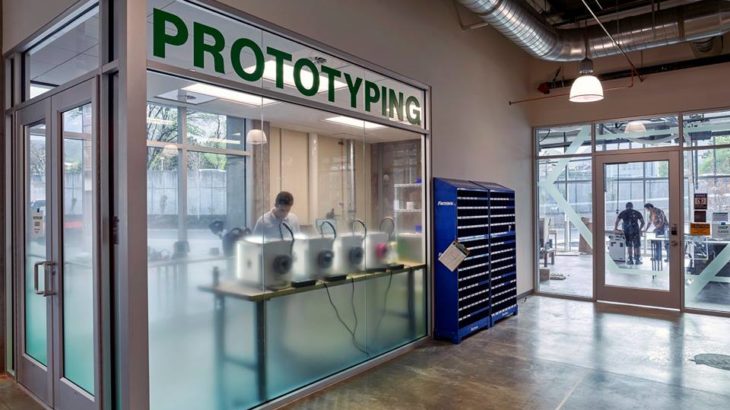For beginner 3-D printers, it’s easy to feel overwhelmed. Recent advances in 3-D print technology have made the impossible, possible: 3-D printing organs, food, even new 3-D printers. At the Lassonde Institute, the Make Space’s free prototyping area focuses on tearing down barriers between non-tech students and 3-D printing. Here are some tips to get you started:
1. Decide What To Print
When starting out, Chris Holland, student director of prototyping, recommends finding a pre-made file online for your first print. Sites like Thingiverse offer thousands of creative commons files that fit within the 8-inch-by-8-inch parameters of the Make Space’s Ultimaker’s and don’t require an account to download. Ready to jump into the deep end and design your prototype? Holland recommends Fusion360, free online modeling software. “The best thing about this software is that it progresses with you,” he said. “Beginners won’t feel overwhelmed, but experts won’t feel confined. It also has a ton of video tutorials.”
2. Choose Your Filament
Filament is the raw material that the 3-D printer heats and extrudes, creating a completed object. The Make Space offers four main types: PLA/PHA, copper, wood and NinjaFlex. Most prints use the PLA/PHA filament, which is a blend of plastics for general purpose printing. Since the center doesn’t order by color, your finished project could be anything from a bright purple to a deep forest green. “If a new material comes out, I just buy it,” Holland said. “I’m willing to experiment, so if a student wants to try something in particular, I’m open to scheduling time with them and exploring the possibilities for the material.”
3. Print Your File
The six UltiMakers in the Make Space are operated on a first-come, first-served basis and have no queue system. If a machine is free, bring your file to the MakeSpace and talk to a Tool Mentor. According to Holland, the biggest barrier students face is the fear of bugging a tool mentor. “If anything, they’ll bug you,” he said. “All are enthusiasts, and we encourage them to approach students in the Make Space.”
The average print time is about 6hours, but don’t worry: you’re not chained to the printer while you wait. Files submitted later in the day will be left to print into the night and completed objects are placed on a shelf by the printers for students to retrieve whenever is most convenient.
The use of the printers and the filament are free, so there’s little risk involved should a print fail. “3-D printing is about speed,” Holland said. “Just get in there and see what works. If it doesn’t, there’s no barrier to trying again. We’ve got all the equipment to make it easy for you, and it doesn’t get any cheaper than free.”
Ready to print your first 3-D object? Drop by to speak with a tool mentor or visit the Make Space’s page for more information




When does the 3D printing room open?
Hello, Benjamin. Find Make hours here: https://lassonde.utah.edu/make/.
Are the 3D printers available to use with Covid restrictions?
Jaron, yes, the Make Space, including the 3-D printers, are open Monday-Thursday at 5-9 p.m. for the fall 2020 semester. These hours are subject to change. Watch the Make program webpage for updates here: https://lassonde.utah.edu/make.